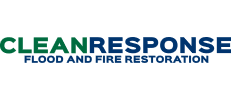If your project originated from damage resulting from a flood, fire, or storm, you should hire a restoration contractor. General contractors generally focus on new construction and remodeling, but jobs that start from a flood, fire, or storm require a specialized expertise that a restoration contractor will have. Restoration contractors approach a damaged building with the goal of saving as much of the building as possible as to mitigate your loss. Also, a comprehensive restoration job involves specialized equipment to adequately dry and eliminate all residual odors. Moreover, a restorations contractor’s familiarity with insurance companies and coordinating claims allows us to expedite the process to ensure the claims are settled in a timely manner.
Clean response can provide an estimate for a fee that is reimbursed if you hire Clean Response to perform remediation work.
An industrial hygienist can evaluate the cause of the odor. Using evaluation results, Clean Response will provide an estimate for remediation.
Point to our services tab and click on Mold Remediation. We have included a link to an EPA guide to mold, moisture and your home.
The length of time depends on the severity of the damage. However, Clean Response can provide you with detailed estimations for the recovery process.
Fire damage can be particularly difficult to thoroughly clean, so we recommend a professional be hired. Clean Response has the experience and skill to ensure that we use the correct combination of cleaning techniques to get the best results.
Clean Response takes safety very seriously. Before beginning a job, all potential hazards are determined and addressed during the initial inspection. By doing things such as removing dangerous debris, addressing any electrical hazards, and improving the quality of the air, Clean Response will make sure everyone at the site is safe.
A number of things determine drying time including location, duration and source of water, the types of building materials, the weather conditions and how quickly emergency services begin. We determine when the drying process is completed through consistent monitoring and evaluation. Although your carpeting feels dry to the touch, padding and sub-floors may still be wet underneath. Each situation is different, however, most property takes approximately three to five days (or more) to dry thoroughly.
We have equipment that accurately reads the moisture level in the affected areas to determine when everything is dry.
It depends on the class of water that the carpet has come into contact with. If the water was from a clean source, then it can typically be dried in place and restored. If the water had a mild degree of contamination the treatment must be judged on a case-by-case basis, but typically the carpet pad will be removed and the carpet dried in place. If the water contains sewage or flowed from outdoors it is considered grossly contaminated and all porous materials affected should be removed.
Our specialized drying systems and equipment allow wood floors dry efficiently and can often resume their original shape. However, the best technique varies from floor to floor and must be considered on an individual basis. Because of the density and finish of the wood, drying the floor can often take 3 weeks or longer. In these cases, Clean Response and/or the insurance adjuster will help you decide if it would be better to replace the floors.
The equipment we use can be noisy and make your property drafty, but is generally safe to be around if you can tolerate any discomfort. If a claim is filed, many times your insurance will help you arrange to temporarily stay somewhere else is that is what’s best.
The increase in heat and humidity can sometimes lead to odors while the building materials are drying. One the humidity levels decline often so does the odor. Cleaning and the use of deodorizers can also be used to aide the process.
Clean Response technicians will determine the extent of the damage and may possibly have to remove a portion of the ceiling to aide in the drying process. If there is insulation in the ceiling, it may also have to be removed.
It depends on the weather conditions outside. Letting in air that is more humid than the air indoors will delay the drying process. It is best to leave the decision to Clean Response.
Rapidly moving air across a porous material that has absorbed water helps the trapped water release into the air, which is then extracted from the air by the dehumidifier.
Yes. We will bring a sample of you carpet pad with us to replace it with an identical thickness, density and quality.
If we take the rugs back to our facility we able to specially clean them to ensure they are cleaned without bleeding or staining. Once dry and clean, they are returned.
The primary responsibility will fall on the property owner, and he or she must sign an authorization form before work can begin. In the owner files an insurance claim, Clean Response usually collects the deductible and any remainder is billed directly to the insurance company.
Yes. Clean Response has a revolutionary new process that naturally eliminates foul odors.
Clean Response uses an advanced electrically activated water compound called EA-H20 that is environmentally sound and does not corrode or damage any surfaces or items. It breaks down the source of the odor to completely eliminate the origin of the smell. This process is also used during mold removal/remediation to eliminate mold spores in the air, as well as a useful application in smoke and fire-related losses.
Some hard surface areas that are affected by sewage contamination can be cleaned and sanitized. However, areas that are porous such as sheetrock should be removed during the emergency response.









